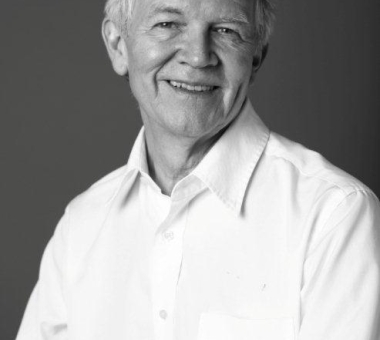Stories of Hope & Recovery

Peter Millard
Workaholic Learns to Put His Health First
Health was never much of a concern for 68-year-old Peter Millard, a New York City-based retail space designer. An avid skier, he had been thin for most of his youth and had few health concerns aside from taking his daily cholesterol-lowering medication.
He first suspected something might be wrong with his health in his early 60s. But it would take several years and several warning signs for him to take his condition seriously and seek treatment for heart disease.
“The first time I experienced shortness of breath, I was coming out of the subway,” said Peter. “I couldn’t make it the whole way without stopping to catch my breath.”
He informed his doctor, who ordered a stress test, which Peter passed with flying colors.
“Everyone was telling me I was too fit to have a heart condition,” said Millard. “The stress test results caused me to delay taking action on my heart.”
Several years later, his energy level noticeably waned. This time, he blamed it on his age. “I was increasingly tired, and I thought, ‘This is what getting older is like.’ It was really limiting me, and I felt awful. I assumed, ’Well, this is why people retire when they’re 65.’”
Finally, when he couldn’t climb a two-story staircase without getting winded, he knew he had to take his worsening condition seriously and see a cardiologist.
The cardiologist performed a nuclear stress test to measure the blood flow to Peter’s heart. Similar to a routine exercise stress test, a nuclear stress test captures blood flow images both during exercise or stress on the heart and during rest. It provides images that indicate areas of low blood flow and damaged heart tissue.
Peter’s test showed signs of a blockage, and his doctor recommended an angioplasty—a procedure to restore normal blood flow through clogged or blocked arteries. But once again, he delayed treatment. It wasn’t until his family started to worry that he decided to take action.
“They kept saying, ‘I don’t like his color,’ and asked me if I was tired. I said, ‘Yes, I’m very tired all the time. I’m exhausted,’” Peter recalled. He sought out a referral to Dr. Ajay Kirtane, an interventional cardiologist at Columbia University Medical Center in New York City.
Given his progressive symptoms, Peter underwent an angiogram. Dr. Kirtane found Peter’s right heart artery was 95% blocked by plaque that severely restricted blood flow to his heart. The blockage was starving the heart of blood, causing it to work harder and draining Peter's energy.
Using a stent placed during the angioplasty procedure, Dr. Kirtane restored normal blood flow to Peter’s heart. It was a big scare—and relief—for his family.
I felt terrific afterward. I felt a ridiculous, tremendous amount of energy again.
Peter Millard“After the angioplasty I could see the toll the thought of losing me had on my wife. My daughter proceeded to yell at me in tears that I was never to do this to her again and I was to take care of myself.”
Peter did have another artery blockage that was not quite as severe. As a means of treating the second blockage, Peter was started on several medications. Despite these, he still had fatigue and wasn’t quite back to full strength. After six months of trying the medications at escalating dosages, he underwent a second angioplasty—this time on one of his left heart arteries, which was 80%–90% blocked.
“I felt terrific afterward. I felt a ridiculous, tremendous amount of energy again,” said Peter. “It’s a privilege to have a really competent doctor - he’s one of the best.”
Since the procedures, Peter’s focused more on his health, including sticking to a healthy diet and exercising regularly—something he prioritizes even with his busy schedule.
“I need to exercise my heart—it’s a muscle," said Peter.
Through it all, Peter says he’s learned how important his health is to not only him but to his family.
“You don’t flirt with life—you don’t play around with that. Every day is such a gift to me.”